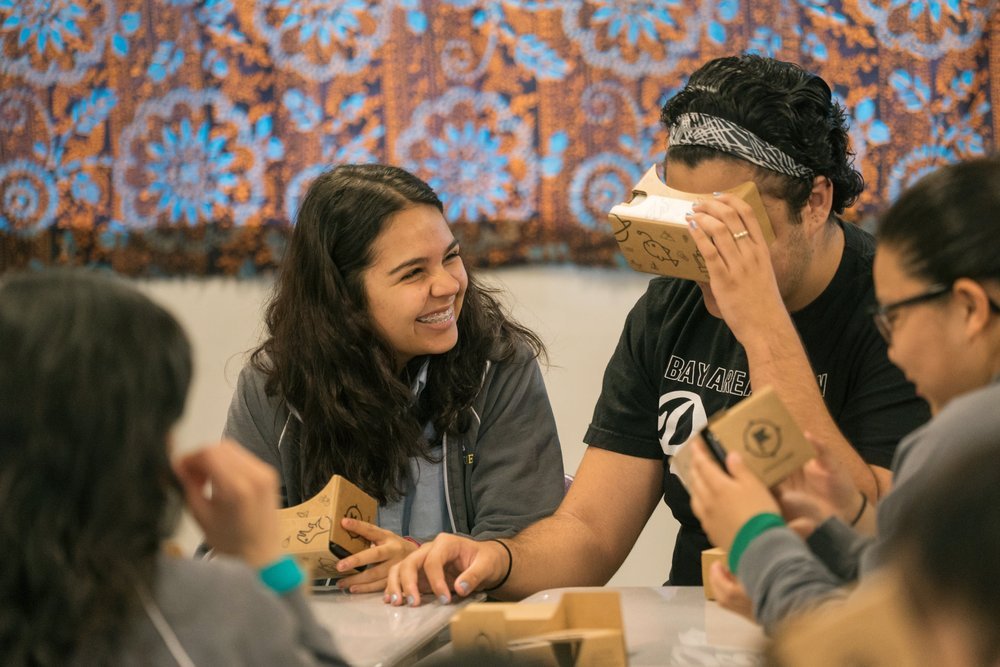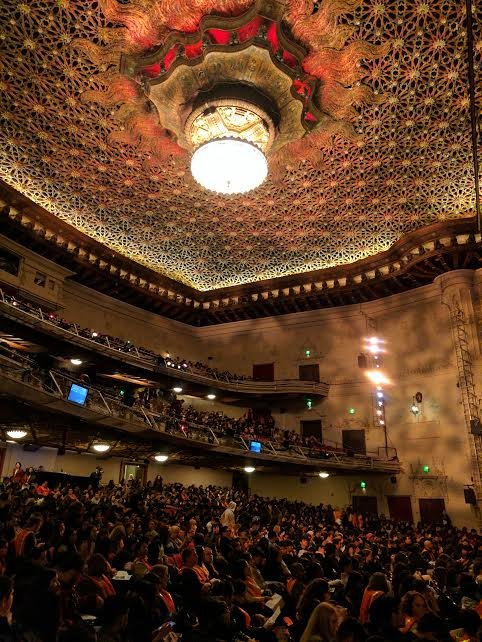Editor’s note: Last week, Google announced a grant to bring students to see “Hamilton.” We tagged along to get a firsthand glimpse at how the students reacted to this unique experience of American history.
“I see him as the underdog, and I think, ‘that’s kind of me, that’s all of us.’” That’s what one high school junior from San Jose, CA had to say last week about Alexander Hamilton. How do you get 21st century kids to relate to a U.S. Founding Father born 260 years ago? Take them on a virtual journey through his life, and then bring that history lesson to the stage.
Last week, students went on six new Google Expeditions to follow along with Alexander Hamilton as he shaped the foundation of our country. Then, using racial justice funding from Google.org, the Hamilton Education program (#EduHam), brought 5,000 Title I students to see “Hamilton” in San Francisco, Chicago and New York. And we were lucky enough to be in the “room where it happens” with 2,000 local students in SF as the curtains rose...

Students go back in time to hang with Alexander Hamilton. Best Monday ever?
Act 1: the Expedition
To get in the right mindset before seeing “Hamilton,” juniors at Aspire Golden State Preparatory School in Oakland, CA went on an Expedition using Google Cardboard. They took a virtual tour through the events of Alexander Hamilton’s life, starting with the American Revolution, where they visited landmarks and read documents that were important to the outcome of the war.
The Expedition continued through the ratification of the Constitution, the creation of our nation’s economic system and George Washington’s presidency. It ended with a glimpse of Alexander Hamilton’s personal life—his letters dealing with love and grief—and ended at the famous spot where he dueled Aaron Burr. With each step in the Expedition, there were collective “oohs,” “aahs,” “whoas” and the occasional snarky comment: “Sick wig, Hamilton.”
Several students noted that, as visual learners, it was easier to understand this historical era through the Expedition, instead of reading about it in a book. Something clicked when they could visualize where these historical moments took place. Joanne Lin, assistant principal of Aspire Golden State, says that her students relate to Hamilton: “He had to make it on his own in America—that’s the connection for many of our kids.”

Act 2: students take the stage
Students participating in #EduHam took a six-week American history and civics program, and had to create a performing arts piece based on a document from the Founding Era. On the day of the show, one student (or in some cases, a duo or trio) performed their acts on the “Hamilton” stage. In San Francisco, the performances—spoken word, raps, poems and musical numbers—touched on themes of courage, independence, racial tension and women’s rights. With each one, the raucous applause in the audience got louder and louder. The term “bringing down the house” may have been coined by high school “Hamilton” fans!
The finale: Q&A with the cast before teleporting to 1776
Before the show, the students heard from the cast, who shared their experiences working on “Hamilton.” Cast member Desmond Nunn encouraged the students to chase their dreams: “Dreaming is great,” he said, “but wake up and make it happen.” When asked about the cultural relevance of “Hamilton,” cast member Hope Endrenyi said, “People don't like to talk about hard subjects. With ‘Hamilton,’ you get lost in it and have a good time, but also talk about something that is important and makes a difference.”
When the lights in the theater flickered, the excitement in the air was palpable. For many students, it was their first time ever attending a musical; most would never have the opportunity to see “Hamilton” otherwise. Cheers erupted as a man in Colonial garb took the stage—his name was Alexander Hamilton.
Curtain call
As Aspire Golden State’s assistant principal Joanne Lin said, “These moments in history don’t just live in the past.” Google Expeditions and #EduHam help bring students from all backgrounds closer to history. With a stronger connection to the events of our country’s past, students can better visualize the role they’ll play in our future—asking themselves, “What comes next?”